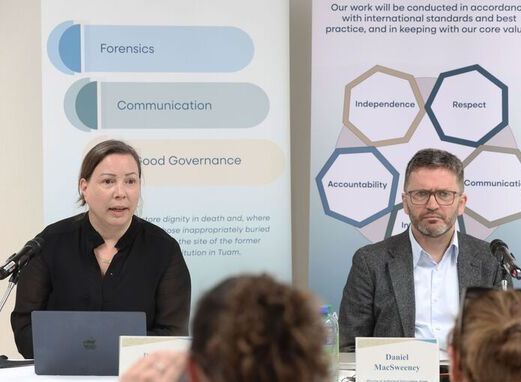Theatre / By Orla O'Sullivan
“These Halcyon Days” * By Deirdre Kinahan * Starring Anita Reeves and Stephen Brennan * Directed by David Horan * at the Irish Arts Center, 553 W. 51st St, NY, NY * Playing Wednesdays through Sundays to June 2 * Tickets available online at www.irishartscenter.org or by calling 866-811-4111.
When Stephen Brennan entered the foyer of the Irish Arts Center, he looked about 20 years younger than the man he had just played on stage—an indication of his acting powers and a hint of how quickly life can change.
Brennan and his co-star Anita Reeves find themselves in a nursing home in Deirdre Kinahan’s latest play, “These Halycon Days” which opened in its U.S. premiere on Sunday.
The play, from Tall Tales Theatre Company in association with Landmark Productions, is destined for the Edinburgh Fringe Festival. It was a hit at last year’s Dublin Theatre Festival. Other recent successes for the Dublin playwright include “Bogboy,” a 2011 New York Times Critics’ Pick and “Moment,” which wowed Chicago audiences last year.
“Halycon” describes an idyllically happy time in the past, and for Kinahan’s two characters here retreating to their memories is their best hope of happiness. Patricia bucks herself with the belief that she will get out. Sean, a former actor, doesn’t entertain such thoughts.
Patricia, so credible as a no-nonsense retired school principal, by degrees shakes him out of his institutionalized state. Sean’s condition is ostensibly mental: dementia. But it is at least as much spiritual, as becomes evident when Patricia reignites in him the life he has tamped down.
She is in for liver cirrhosis (and, no, it’s not from drink! as she tells him) but her wits are sharp. When he, in his confusion, thinks he has missed his favorite lunch, Sunday’s roast chicken, she reassures him that he’s early, wryly adding “We’re up at six, there’s always plenty of time.”
From their first encounter, when she finds him alone in a wheelchair in the conservatory and almost beyond reach, Patricia challenges Sean. Part of the comedy comes from neither really listening, each being used to no one listening—until they become “synchronized” as Sean eventually tells how he was with his departed love.
You might say Patricia is afraid of dying, while Sean is afraid of living, from fear of feeling his loss. By connecting each somewhat liberates the other.
As Patricia frees Sean--from his wheelchair, the indoors, his silence—we see a minor miracle before our eyes. Sean’s entire demeanor changes from foggy and faltering to re-becoming his earlier self acting in “The King and I,” as he sails around the room with Patricia to “Shall We Dance?”
Kinahan doesn’t patronize the cute old people, though, or the audience. Patricia, a with-it iPod user, is irritated that she has to play music on the home’s ancient boombox. She doesn’t get the last piece missing from her jigsaw, and she ends her days calculating how quickly she must die so the home she shared with her sister won’t have to be sold to pay for this nursing home. There’s even something of a shocking sex scene derailed.
Throughout, it’s a treat to watch two of Ireland’s best-known theatre actors, particularly Brennan, whose role offers immense scope for transformation.
One tiny off element is the set. Its rubber plant and louvred wooden shutters blocking the sun suggest the American South, rather than the typical wicker-and-glass Irish conservatory.
Kinahan has said the play is about hope. It left me wanting to bawl, and emerging into sunshine to look with new eyes upon the crowds enjoying the spring day. Thomas Hardy’s poem “During Wind and Rain” echoed: tales of “blithely breakfasting all –men and maidens–yea” until, suddenly, “down their carved names the rain-drop ploughs.”









